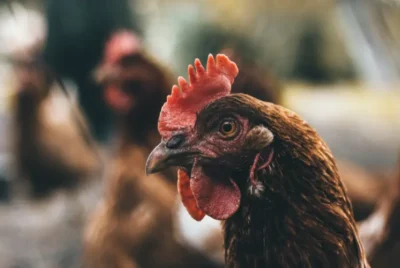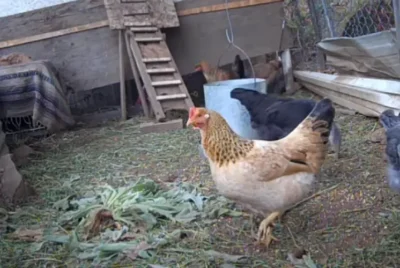Caring for Your Blue Copper Marans: Diet, Shelter, and More
For poultry enthusiasts, the Blue Copper Marans stands out as a gem among breeds—known for its striking appearance and the richly colored eggs it produces. Yet, like any precious jewel, it comes with its intricacies. But with the right information and tools, the journey becomes less challenging and more rewarding. So, I created this guide to provide practical tips and ensure you can get the best from your Blue Coppers experience.
Quick Overview
- Average size: Hens – 6.5lbs, Cocks – 8lbs
- Plumage: Blue/slate with golden copper to mahogany red collar; males with additional copper & red tones
- Features: Large body, single comb, smooth plumage, feathered shanks
- Disposition: Hardy, calm, occasionally aggressive, broody hens
- Dual purpose: Eggs & meat
- Egg Production: Dark brown, 200+ eggs/year
History and Origin of Blue Copper Marans
The Blue Copper Marans have a special story that begins in a town in France named Marans – that’s how they got their cool name, French Blue Copper Marans. In the 1800s, sailors brought these chickens to France from their travels. People in France really liked them because they gave lots of tasty eggs and meat.
Over time, other faster-growing chickens became more popular. However, the Blue Copper Marans still hold a special place in many hearts, especially in the U.S., where chicken experts even have a special group to appreciate them.

Breed Standard
In the realm of poultry, standards matter, and when it comes to Blue Copper Marans, their recognition is nothing short of an acknowledgment of their quality. The American Poultry Association (APA) has indeed recognized the Blue Copper Marans under its esteemed Standard of Perfection. This is a testament to the breed’s superior genetics, appearance, and attributes.
While Marans come in various shades and patterns – from Cuckoo Marans to Black Copper Marans, Midnight Majesty Maran, and even the distinctly termed French Black Copper Marans – it’s crucial to note the specific traits that the APA values. The feathered leg variety of Maran is the one that stands recognized by the APA. This distinctive feature sets them apart and speaks volumes of their lineage and purity.
Over time, poultry enthusiasts, in their quest for variation and novelty, have cross-bred Marans with other chicken breeds. This venture into genetic mix and matches has birthed the Bantam Marans chickens, a petite version retaining many of the Marans’ favored traits.
Regarding their size, the Marans do present a notable distinction between genders. My mature Maran roosters, standing tall and majestic, typically tip the scales at about 8lbs. On the other hand, Maran hens, elegant in their own right, usually weigh between 4.5lbs to 6lbs, depending on their age and health.
Physical Appearance of the Blue Copper Marans
In my backyard, I proudly raise the Blue Copper Marans, medium-sized birds that are a feast for the eyes with their unique colors and silky plumage. My hens have this entrancing dark to copper-colored hue on their heads and hackles while their bodies gleam in a deep blue shade.
Their tails, slender and neat, elegantly point backwards, setting them apart from other breeds. Their grey feathered legs, each with four evenly spaced toes, are one of my favorite features.
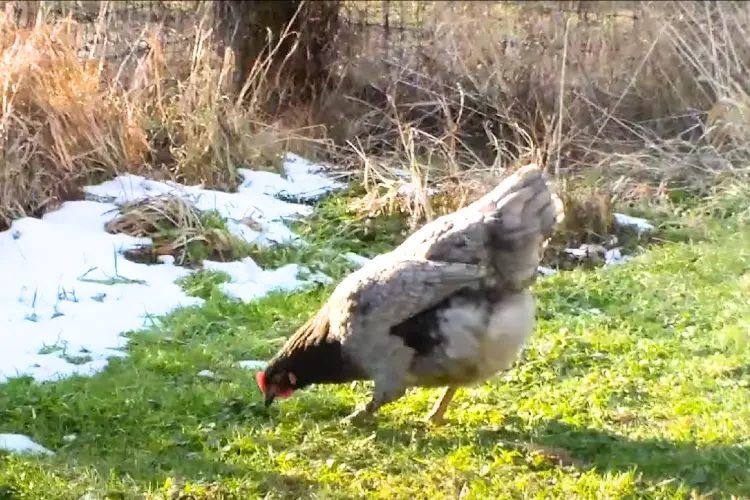
My roosters, on the other hand, have this striking bright copper on their heads and necks and a mesmerizing blue that blankets their back, breasts, and thighs, sometimes fading into a dusky blue on their tails.
Their robust combs, with distinct peaks, and their vibrant red wattles always draw attention. I’ve noticed that while most of my Marans have pristine white skin, a few have an intriguing black mottling, adding to their unique charm.
Personalities of the Blue Copper Marans
Temperament
My Blue Copper Marans have always shown a calm and composed demeanor. Unlike some of the other breeds I’ve encountered, they possess a gentle nature which makes them delightful companions. Over time, I’ve seen them establish a soft bond with both humans and other birds in their flock.
Hardiness
Resilience is another characteristic that defines my Marans. Whether it’s the changing seasons or adapting to new surroundings, they always manage to acclimatize effortlessly. Their robust nature ensures that they fare well in varied conditions, reducing the constant worry about their well-being during extreme weather patterns However, during the colder months, I’ve learned to take special care of their combs to prevent frostbite. It’s a small price to pay for such a sturdy breed.
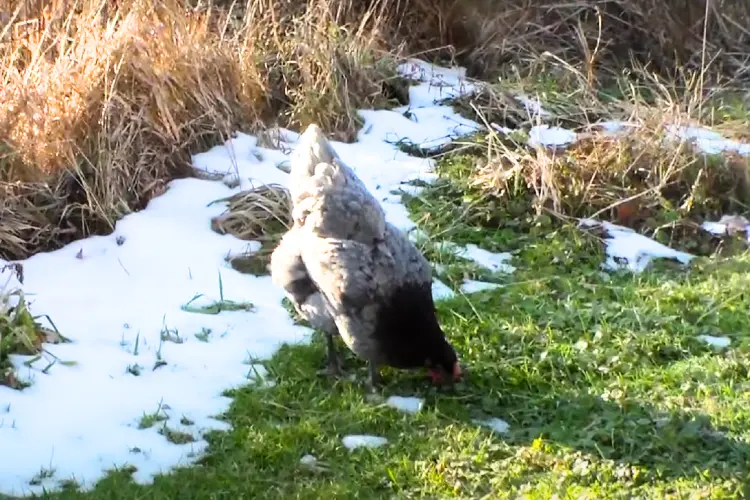
Noise Level
If you’re imagining a loud, constantly-chattering flock, think again. My Blue Copper Marans are relatively quiet. Sure, there are moments when they vocalize, especially when they’re excited or curious, but compared to other breeds I’ve come across, they are quite subdued. This makes them perfect neighbors in my urban setting, ensuring that I maintain a harmonious relationship with those living nearby.
Read also: Understanding Chicken Communication: Sounds Explained
Lifespan
The lifespan of Blue Copper Marans typically ranges from 5 to 8 years. However, the longevity of these birds can vary based on factors like the quality of care, diet, living conditions, and any potential health issues they might encounter. Some individuals, especially those well-cared for or kept as pets, might even exceed this range.
Blue Copper Marans Egg Color and Production
The Blue Copper Marans hens are renowned for their standout egg color. They lay chocolate brown eggs that are often likened to chocolate in shade. It’s distinct very dark eggs that set them apart and make them a highly sought-after chicken breed for many poultry enthusiasts, including myself.
In terms of production, my Blue Copper Marans have been fairly reliable layers. Generally, they commence their laying cycle around the age of 5 to 6 months and produce the darkest eggs within this range. Once they hit their stride, I can expect a yield of roughly 150 to 200 eggs annually from each hen. But it’s not just the color that’s impressive; the eggs are also of a good size, making them perfect for culinary adventures.
Though the signature of the Marans breed is they lay dark brown eggs, like the Black Copper Marans eggs, there can be a slight variation in the shade from one hen to another. You can also get Blue Copper Marans chicks from reputable hatcheries.
Read also: Egg Production and Other Facts about California Tan Chicken Breed
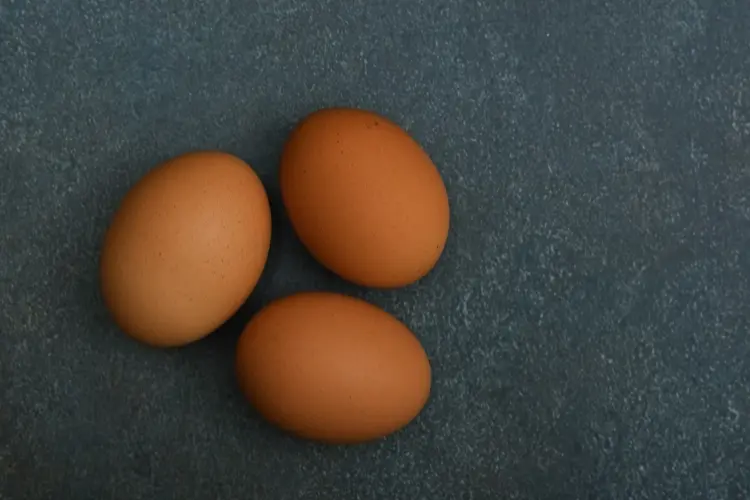
Meat Production of Blue Copper Marans
When it comes to meat, my Blue Maran chickens don’t just excel in egg laying. These birds have a robust and hearty build, making them valuable for dual-purpose farming.
The meat of the Blue Copper Marans is flavorful and tender. When fully grown, the roosters can weigh in around 8lbs, while the hens usually settle around 6lbs to 4.5lbs. This weight range ensures a decent yield of meat from each bird.
Raising them primarily for meat means paying attention to their diet and ensuring they get the right nutrients for optimal growth. Their steady growth rate and the quality of meat they offer make them a favorite in my poultry selection. While they might not mature as rapidly as some specialized meat breeds, the wait is worth it, given the texture and taste of the meat.
Health Concerns
While my Blue Copper Marans are generally hardy and less susceptible to diseases than other breeds, there are a few health concerns that require vigilance.
- Frostbite on Combs: Their beautiful, large combs are prone to frostbite during colder months. To counter this, I make sure the coop is well-insulated and warm.
- Feathered Legs: Those feathered legs, while charming, can become a problem if they get mucky. Wet and muddy conditions can cause mud balls to form on the feathers. To prevent this, I always keep dry bedding in the coop.
- External Parasites: Mites and lice can be an issue, although not a frequent one. I use diatomaceous earth as a preventive measure to keep these pests away.
- Internal Parasites: Worms can occasionally be a problem, attaching themselves to the intestinal walls and impacting the health and productivity of the bird. I have a go-to chicken wormer on hand but always consult my vet for the correct dosage.
- Respiratory Issues: Like all chickens, Blue Copper Maran can suffer from respiratory issues if kept in damp, poorly ventilated conditions. I make sure that their housing is well-ventilated and dry.
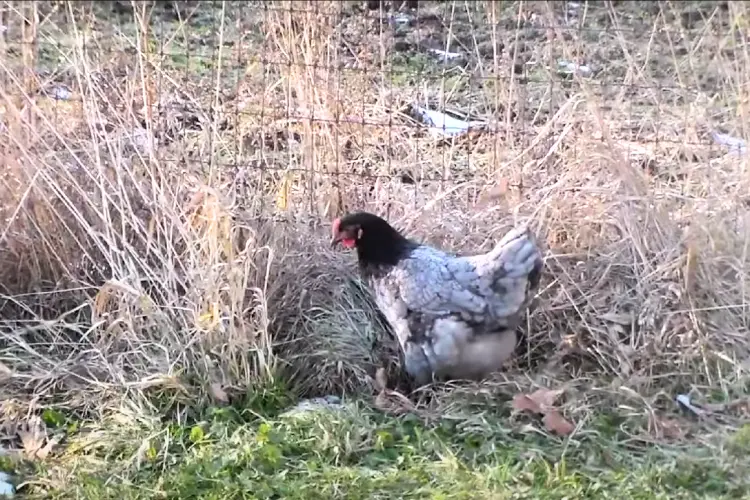
Conclusion
Caring for the Blue Copper Marans is both a privilege and a rewarding journey. Their unique egg coloration, combined with their poised demeanor, makes them stand out in the poultry world. As with any breed, they deserve consistent attention, proper nutrition, and a safe environment to thrive in.
By investing time and effort into understanding their specific needs and preferences, you not only ensure their health and happiness but also deepen the bond between you and these magnificent birds.


